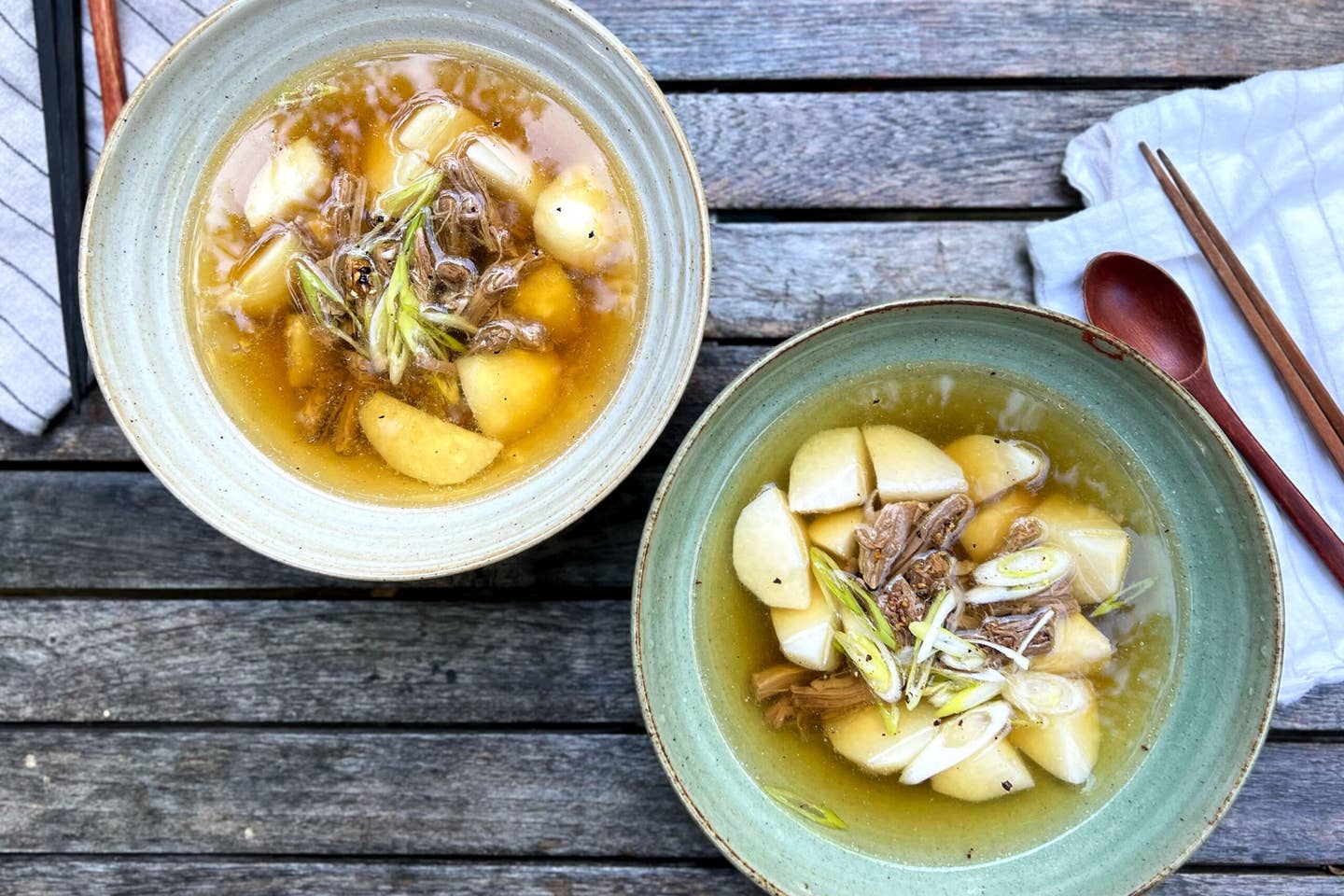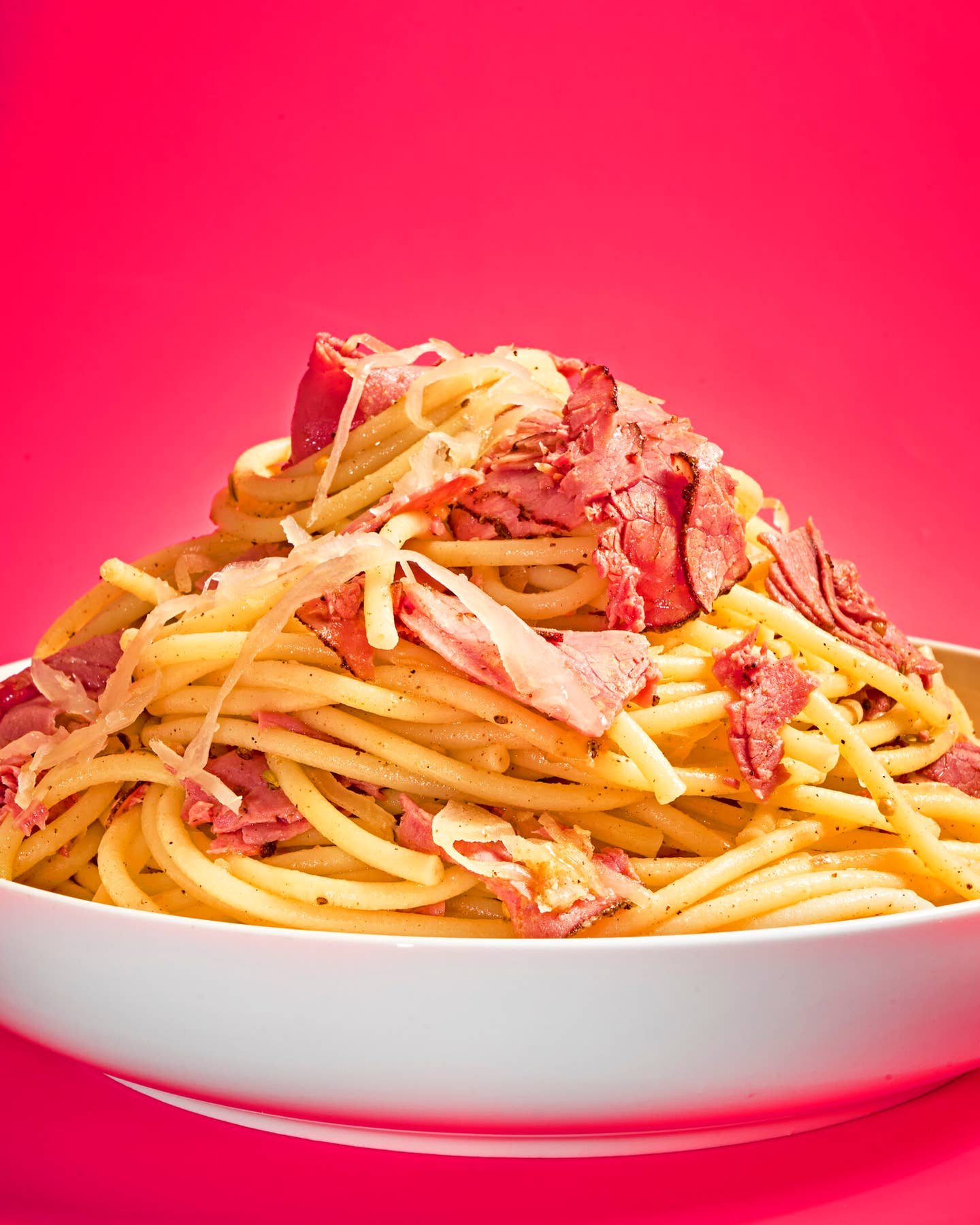Toranguk (Korean Taro Soup)
A rich and beefy broth makes this a warming centerpiece for Chuseok, the Korean harvest celebration.
- Serves
4
- Cook
1 hour 30 minutes

During Chuseok—the annual Korean harvest festival, also known as Hangawi, traditionally held on the eighth month of the lunar calendar—the dinner table is laden with indulgent, celebratory food like jeon (meat and fish fritters) or songpyeon (honeyed rice cakes stuffed with sesame paste, sweet beans, and chestnuts). But there is one restorative exception to this indulgence, often served as part of the feast, or even on the morning after as a (much-needed) hangover soup. That delicious exception is captured in this toranguk recipe: a beefy, brothy soup where the star of the show is taro, a starchy root vegetable with a creamy center that is said to aid in digestion. Taro has a bit of a slippery, okra-like texture that makes it a natural comfort food during or after a big meal.
This recipe comes courtesy of chef Ji Hye Kim, chef and owner of Miss Kim in Ann Arbor, Michigan. When she was growing up, toranguk was a must-have on the dinner table, even if the table was already full. As Ji Hye says: “Chuseok is one holiday where there’s so much abundance of food … it’s said that you eat toranguk to help you digest all the other food you eat on top of it.” Despite its rich brisket-based broth, the soup is intended to be mildly spiced, so offer it with additional salt and black pepper on the table, along with steamed white rice and a wide assortment of Korean banchan, or side dishes. If you cannot find taro, this recipe can easily work with mu (Korean radishes), white radishes, or even potatoes.
Ingredients
For the stock:
- 1 lb. beef brisket, cut into 3-in. wide chunks
- ¼ cup dried anchovies
- One 3-in. square of dashima (kelp seaweed)
For the soup base:
- 3 Tbsp. soy sauce
- 2 Tbsp. finely chopped garlic
- 1 Tbsp. sesame oil
- ½ tsp. freshly ground black pepper
- 2 Tbsp. chopped scallions, for garnish
For the taro:
- 1 lb. fresh taro, peeled and cut into 1-in. cubes
- 1 tsp. kosher salt
Instructions
Step 1
Step 2
Step 3
Step 4
Step 5
Step 6
Keep Reading
Continue to Next Story










